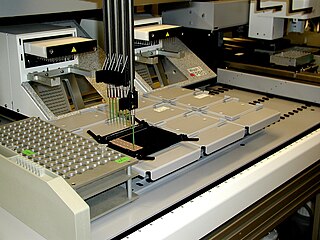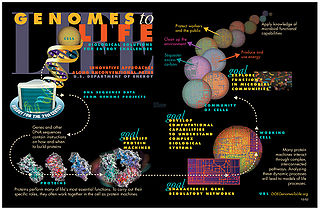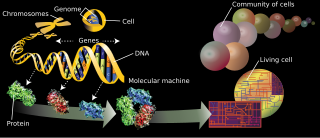Related Research Articles

In vitro studies are performed with microorganisms, cells, or biological molecules outside their normal biological context. Colloquially called "test-tube experiments", these studies in biology and its subdisciplines are traditionally done in labware such as test tubes, flasks, Petri dishes, and microtiter plates. Studies conducted using components of an organism that have been isolated from their usual biological surroundings permit a more detailed or more convenient analysis than can be done with whole organisms; however, results obtained from in vitro experiments may not fully or accurately predict the effects on a whole organism. In contrast to in vitro experiments, in vivo studies are those conducted in living organisms, including humans, and whole plants.

Pharmacology is a branch of medicine and pharmaceutical sciences which is concerned with the study of drug or medication action, where a drug can be broadly or narrowly defined as any man-made, natural, or endogenous molecule which exerts a biochemical or physiological effect on the cell, tissue, organ, or organism. More specifically, it is the study of the interactions that occur between a living organism and chemicals that affect normal or abnormal biochemical function. If substances have medicinal properties, they are considered pharmaceuticals.

Biophysics is an interdisciplinary science that applies approaches and methods traditionally used in physics to study biological phenomena. Biophysics covers all scales of biological organization, from molecular to organismic and populations. Biophysical research shares significant overlap with biochemistry, molecular biology, physical chemistry, physiology, nanotechnology, bioengineering, computational biology, biomechanics, developmental biology and systems biology.

Proteomics is the large-scale study of proteins. Proteins are vital parts of living organisms, with many functions. The proteome is the entire set of proteins that is produced or modified by an organism or system. Proteomics has enabled the identification of ever increasing numbers of protein. This varies with time and distinct requirements, or stresses, that a cell or organism undergoes. Proteomics is an interdisciplinary domain that has benefitted greatly from the genetic information of various genome projects, including the Human Genome Project. It covers the exploration of proteomes from the overall level of protein composition, structure, and activity. It is an important component of functional genomics.

Interaction is a kind of action that occurs as two or more objects have an effect upon one another. The idea of a two-way effect is essential in the concept of interaction, as opposed to a one-way causal effect. Closely related terms are interactivity and interconnectivity, of which the latter deals with the interactions of interactions within systems: combinations of many simple interactions can lead to surprising emergent phenomena. Interaction has different tailored meanings in various sciences. Changes can also involve interaction.

Systems biology is the computational and mathematical analysis and modeling of complex biological systems. It is a biology-based interdisciplinary field of study that focuses on complex interactions within biological systems, using a holistic approach to biological research. When it is crossing the field of systems theory and the applied mathematics methods, it develops into the sub-branch of complex systems biology.

The branches of science known informally as omics are various disciplines in biology whose names end in the suffix -omics, such as genomics, proteomics, metabolomics, and glycomics. Omics aims at the collective characterization and quantification of pools of biological molecules that translate into the structure, function, and dynamics of an organism or organisms.

Pharmacodynamics (PD) is the study of the biochemical and physiologic effects of drugs. The effects can include those manifested within animals, microorganisms, or combinations of organisms.
Clinical pharmacology is the science of drugs in humans and their optimal clinical use in patients. It is underpinned by the basic science of pharmacology, with an added focus on the application of pharmacological principles and quantitative methods in the real human patient's population. It has a broad scope, from the discovery of new target molecules to the effects of drug usage in whole populations.
A biological target is anything within a living organism to which some other entity is directed and/or binds, resulting in a change in its behavior or function. Examples of common classes of biological targets are proteins and nucleic acids. The definition is context-dependent, and can refer to the biological target of a pharmacologically active drug compound, the receptor target of a hormone, or some other target of an external stimulus. Biological targets are most commonly proteins such as enzymes, ion channels, and receptors.
Systems biomedicine, also called systems biomedical science, is the application of systems biology to the understanding and modulation of developmental and pathological processes in humans, and in animal and cellular models. Whereas systems biology aims at modeling exhaustive networks of interactions, mainly at intra-cellular level, systems biomedicine emphasizes the multilevel, hierarchical nature of the models by discovering and selecting the key factors at each level and integrating them into models that reveal the global, emergent behavior of the biological process under consideration.
In pharmacology, biological activity or pharmacological activity describes the beneficial or adverse effects of a drug on living matter. When a drug is a complex chemical mixture, this activity is exerted by the substance's active ingredient or pharmacophore but can be modified by the other constituents. Among the various properties of chemical compounds, pharmacological/biological activity plays a crucial role since it suggests uses of the compounds in the medical applications. However, chemical compounds may show some adverse and toxic effects which may prevent their use in medical practice.

In pharmacology, the term mechanism of action (MOA) refers to the specific biochemical interaction through which a drug substance produces its pharmacological effect. A mechanism of action usually includes mention of the specific molecular targets to which the drug binds, such as an enzyme or receptor. Receptor sites have specific affinities for drugs based on the chemical structure of the drug, as well as the specific action that occurs there.
Pharmacometrics is mathematical models of biology, pharmacology, disease, and physiology used to describe and quantify interactions between xenobiotics and patients, including beneficial effects and adverse effects. It is normally applied to quantify drug, disease and trial information to aid efficient drug development, regulatory decisions and rational drug treatment in patients.
The following outline is provided as an overview of and topical guide to clinical research:
The following outline is provided as an overview of and topical guide to natural science:
Systems medicine is an interdisciplinary field of study that looks at the systems of the human body as part of an integrated whole, incorporating biochemical, physiological, and environment interactions. Systems medicine draws on systems science and systems biology, and considers complex interactions within the human body in light of a patient's genomics, behavior and environment.
Network medicine is the application of network science towards identifying, preventing, and treating diseases. This field focuses on using network topology and network dynamics towards identifying diseases and developing medical drugs. Biological networks, such as protein-protein interactions and metabolic pathways, are utilized by network medicine. Disease networks, which map relationships between diseases and biological factors, also play an important role in the field. Epidemiology is extensively studied using network science as well; social networks and transportation networks are used to model the spreading of disease across populations. Network medicine is a medically focused area of systems biology. A gentle introduction to the field can be found here: https://web.uniroma1.it/stitch/node/5613.
Bing Liu was a Chinese coronavirus researcher living and researching in the United States. He was a Research Assistant Professor of Computational & Systems Biology Department at the University of Pittsburgh School of Medicine. He was 37 years old at the time of his death, in which he was shot dead in his home. The case received American and Chinese media coverage.
References
- ↑ Zeng (B.) J., On the holographic model of human body, 1st National Conference of Comparative Studies Traditional Chinese Medicine and West Medicine, Medicine and Philosophy, April, 1992 (termed "systems medicine and pharmacology").
- ↑ Seth I. Berger and Ravi Iyengar (2011). "Role of systems pharmacology in understanding drug adverse events". Systems Biology and Medicine. 3: 129–35. doi:10.1002/wsbm.114. PMC 3057924 . PMID 20803507.